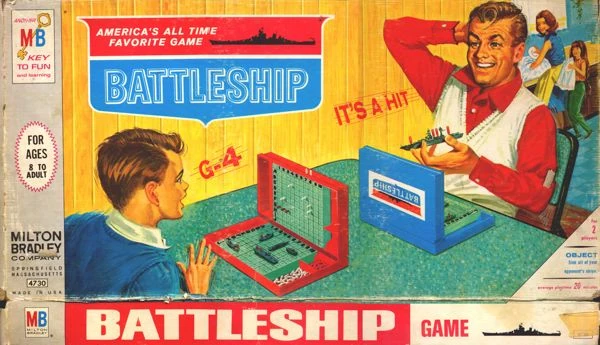In this project I used Ruby to build an implementation of the classic game Battleship.
- Proficiently use TDD to drive development
- Practice breaking a program into logical components
- Practice implementing a useable REPL interface
- Apply previously learned Enumerable techniques in a real context
You are to build a playable game of Battleship that runs in a REPL interface. The game will allow a single human player to play against a (simplistic) computer player.
The game will include several distinct phases:
- Start Game Sequence
- Computer Ship Placement
- Player Ship Placement
- Player Shot Sequence
- Computer Shot Sequence
- Ship Hit Sequence
- End Game Sequence
- Setup SimpleCov to monitor test coverage along the way
- The player starts the game by running
ruby battleship.rbfrom within your project directory - Then they see:
Welcome to BATTLESHIP
Would you like to (p)lay, read the (i)nstructions, or (q)uit?
>
- If they enter
porplaythen they enter the ship layout described below. - If they enter
iorinstructionsthey should be presented with a short explanation of how the game is played. - If they enter
qorquitthen the game should exit
When the player decides to start a game, the computer player should place their ships. The baseline computer should simply use random placements, but stil obey these constraints:
Note that their are certain restrictions on where a ship can be placed. Specifically:
- Ships cannot wrap around the board
- Ships cannot overlap
- Ships can be laid either horizontally or vertically
- Coordinates must correspond to the first and last units of the ship. (IE: You can't place a two unit ship at "A1 A3")
After the computer has placed its ships, the player should see:
I have laid out my ships on the grid.
You now need to layout your two ships.
The first is two units long and the
second is three units long.
The grid has A1 at the top left and D4 at the bottom right.
Enter the squares for the two-unit ship:
Then they enter coordinates like this:
A1 A2
Which places the two element ship on squares A1 and A2. Then it asks for the coordinates for the three-unit ship.
Player ship positions should be validated according to the same rules listed above. If a user enters an invalid ship coordinate, the game should display a message explaining which of the rules their choice violated, then ask them to re-enter all coordinates for that specific ship. (Any previous ship placements should still be retained)
Once all ships have been placed, the user can enter the main game flow phase.
During the main game, players take turns firing at one another by selecting positions on the grid to attack.
During this phase the game will frequently need to display the current game view. We'll use a simple ASCII text grid of letters (to indicate rows) and numbers (to indicate columns).
Your board will look something like this:
===========
. 1 2 3 4
A
B
C
D
===========
Once the ships are laid out the game starts with the Player Shoots Sequence.
- Display the map from the current player's point of view
- Prompt the player for a position on which to fire
- Indicate whether that shot was a hit or a miss and display an updated map
Display a map using the format described above. On the map, include
information about the current player's previous shots. For every
shot that landed a hit, mark that position with an H, and fore very
shot that missed, mark that position with an M.
So, on the first turn, a player's grid will look empty. But as the game progresses, it will gradually fill up with misses and hits:
===========
. 1 2 3 4
A H M
B H M
C H M
D
===========
At the bottom of the grid display, the board should include a message prompting the player to enter a coordinate to fire on. This should follow the same pattern as when placing ships -- a letter/number combination to indicate the row and column to hit.
You should validate that the player's choice is a valid coordinate on the board, and that they have not already fired on that position before. (If they have, display a message explaining these constraints)
After the player has entered their target, display a short message indicating whether it was a hit or a miss. Additionally, re-render the board showing the new shot.
Finally, prompt the player to end their turn by pressing ENTER.
Once the player has ended their turn, the AI will fire. This follows a similar process, except that instead of prompting for a target, the computer will simply select one at random from the positions that it has not yet fired at (again, not a very sophisticated AI, but good enough for now).
Once the computer has selected, display a message to the human player indicating which position the computer fired at and whether it was a miss or a hit.
Finally, give the player an overview of the computer's progress so far by
displaying the game grid of the player's ships with Hs over any positions
the computer has hit and Ms over any positions the computer has fired at but
missed.
Then, return to the Player Shot Sequence.
- If the hit did not sink the ship, tell them that they hit an enemy ship
- If the hit sunk the ship, tell them they sunk it and the size of the ship.
- If the hit sunk the ship and it was the last enemy ship, then enter the End Game Sequence
When either the player or computer wins the game...
- Output a sorry or congratulations message
- Output how many shots it took the winner to sink the opponent's ships
- Output the total time that the game took to play

